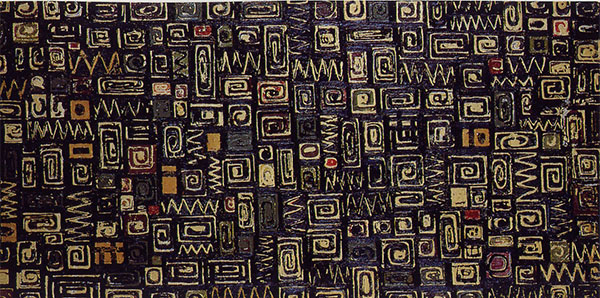Lee Krasner
If we think of Abstract Expressionism, we think of Jackson Pollock. If we think of Jackson Pollock we think of dripping and we immediately imagine one of his canvases.
If we think of Abstract Expressionism and Pollock at the same time, it is unlikely that his wife will immediately come to mind, despite once an artist and exponent of the movement.
Pollock since 1945, Lenore Lee Krasner (born Lena, 1908 – 1984) has always known she wanted to make art as evidenced by her education, which allows her to know and learn the techniques, the theories, the artworks of the great masters .
The detachment from a more purely academic preparation occurs when she begins to follow the lessons of the German painter Hans Hofmann, close to Cubism, which is reflected in the geometric style that characterizes her artworks inspired by still lifes or human figure, up to a turning point, which also coincides with her meeting with Pollock and which even leads her to destroy many of her previous works, which did not respond to her need for expression and gestures.
From here her production is characterized by phases: the Little Images that she creates by working with her own imagination rather than based on a model and which also seem to recall her husband’s dripping, the collages that shows the expressiveness characterizing the act of cutting and of the tear (sometimes using works discarded by Pollock himself); Action Painting materializes in the Earth Green and Umber series, which seem to express the feelings of pain and loss following the sudden death of her husband, with organic figures that fill the large canvases; the following Primary Series seem to recall floral shapes with bright colors.
The numerousness and diversity of her works, a sign of a continuous exploration and reinvention of himself, began to be re-evaluated, or perhaps evaluated for the first time, from the 1960s: the emotional bond with such a well-known figure had inevitably obscured his being first person artist.
In the years of her marriage Lee had never stopped painting, but her being a woman and therefore a wife had pushed her to take a step back in favor of her husband, on whom she had the same influence and who helped in the knowledge of artists and collectors.
However, she always knew she had to fight for the way in which the public and the critics would have received her, so much so that she did not sign her works so as not to make them attributable to her or at most to affix only the initials LK.
But on the other hand, she had always had this awareness of being disadvantaged compared to male colleagues, regardless of the status of the man she married: this perhaps had been concretely confirmed by Hofmann himself, who referring to one of her works told her “This is so good, you would never know it was done by a woman”.
The acknowledgement began to arrive very late or perhaps even too late: in 1973 his first solo show took place at the Whitney Museum of American Art and in 1984 a retrospective was organized at the MoMA, a few months after his death.
Although the period prevents us from seeing her live, the Guggenheim in Bilbao in collaboration with the Barbican Center in London today celebrates the production of this artist with a large biographical exhibition (Lee Krasner. Living Color) that aims to follow her path and its transformation, bringing works never exhibited in Europe.
The events of Krasner show us that was the condition of women at a time when sex was obviously a brake on the career, and the proximity to a man already known even more, but it also shows us how he was able to continue experimenting by supporting that which was not only his passion, but his life and his work.

